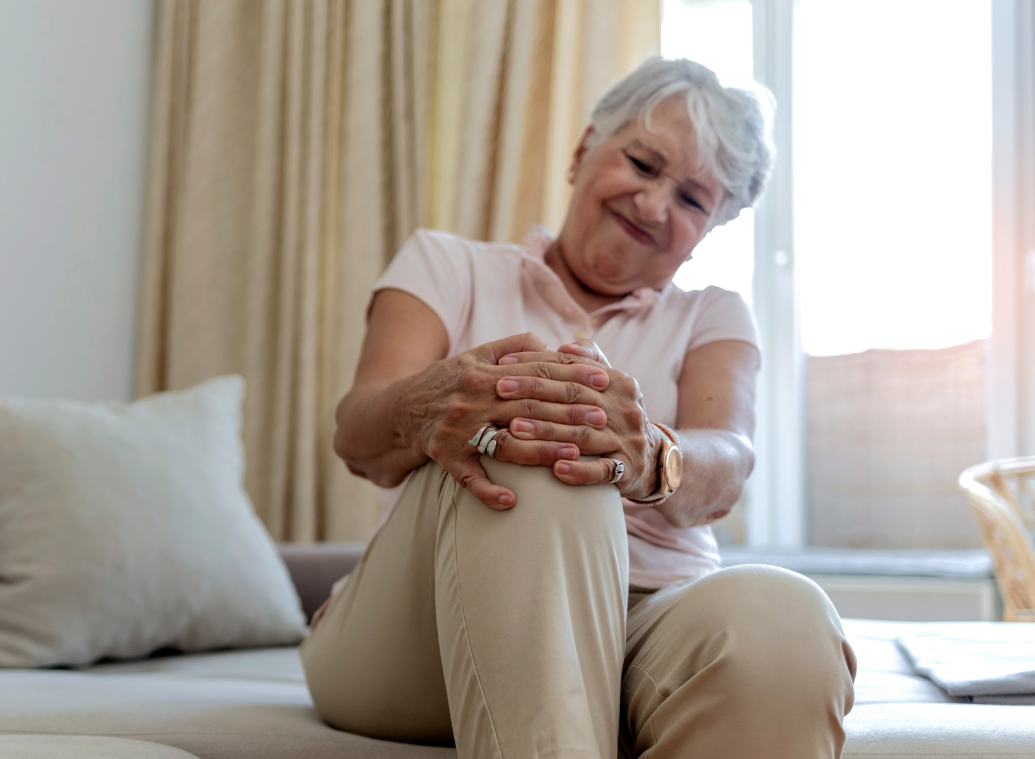Osteoarthritis: Which parts of the body can be affected?
Published 17 Sep 2023 • By Claudia Lima
Osteoarthritis is the most common joint disease, affecting millions of people worldwide. This degenerative joint disease can impact various parts of the body, from the knees to the hands, and even the spine. Consequently, it leads to a variety of symptoms and challenges for those who suffer from it.
Where can osteoarthritis occur in the body? What are the characteristic symptoms of osteoarthritis in each area? What treatment options are available to relieve pain and improve the quality of life?
Find the answers in our article!

What is Osteoarthritis?
Affecting over 32.5 million adults in the US, osteoarthritis is a joint disease characterized by the destruction of cartilage, inflammation of the membrane lining the inside of the joint (synovial membrane), and remodeling of the bone layer directly beneath the cartilage (subchondral bone). The symptoms of osteoarthritis can include pain, stiffness, inflammation, and an accumulation of fluid within the joint cavity. Osteoarthritis can significantly impact the daily lives of those who suffer from it, as it can lead to major disability and a loss of mobility.
Several risk factors are identified in the development of osteoarthritis. These may include:
- Age: The older a person is, the more likely they are to be affected.
- Excessive joint pressure, mechanical stresses, obesity, frequent lifting of heavy loads, overly intense or poorly controlled physical activity.
- Metabolic disorders caused by conditions like diabetes, obesity, high blood pressure, or dyslipidemia.
- Certain other joint diseases, such as chondrocalcinosis, gout, or inflammatory rheumatic diseases like rheumatoid arthritis or psoriatic arthritis.
- Anatomical abnormalities, such as hip dysplasia.
- Trauma-related sequelae, like joint fractures, neglected sprains, or dislocations.
- Genetics, as osteoarthritis can be hereditary.
What are the different locations of osteoarthritis?
All mobile joints can be affected by osteoarthritis, but some locations are more common than others. Osteoarthritis of the knee and hip is more disabling because these joints bear the body's weight.
Knee Osteoarthritis (Gonarthrosis)
Knee osteoarthritis can affect one or both knees, causing very painful inflammatory episodes. It primarily affects women over 40 years of age. It can involve the femoropatellar joint (between the femur and patella) and the femorotibial joint (between the femur and tibia). Symptoms may include pain during flexion or walking, swelling, synovial fluid effusion, stiffness, crackling sounds, and deformities. Severe cases may require joint aspiration.
Hip Osteoarthritis (Coxarthrosis)
Hip osteoarthritis typically develops around the age of 45. In coxarthrosis, pain is often felt in the groin or buttock crease and may radiate down the front of the thigh to the knee. Stiffness is noted after periods of inactivity and improves with activity. Some people may experience crepitus (a popping, clicking or crackling sound) in the hip joint during movement. It progresses slowly, but can eventually lead to limited walking and a limp. Orthopedic insoles and/or crutches are often recommended for advanced coxarthrosis.
Spinal Osteoarthritis
Three types of spinal osteoarthritis are recognized: cervical (cervical spondylosis), dorsal (thoracic spondylosis), and lumbar (lumbar spondylosis).
- Cervical spondylosis is common due to the weight of the head on the neck vertebrae. Symptoms include neck pain, headaches, numbness, or tingling in the arms and shoulders.
- Thoracic spondylosis affects the thoracic vertebrae and can cause back pain radiating into the chest, stiffness, and reduced flexibility.
- Lumbar spondylosis results in lower back pain, hip and buttock pain, reduced mobility, and can affect the hips and buttocks.
Hand and Finger Osteoarthritis (Digital Arthrosis)
Hand and finger osteoarthritis, also known as digital arthrosis, mainly affects postmenopausal women. Hereditary and hormonal factors, along with overweight and manual labor, can contribute to its development. Symptoms include swelling, deformities, and stiffness, leading to difficulties in daily activities. Thumb involvement is referred to as rhizarthrosis, causing significant pain and thumb deformity, limiting grasping abilities. Splinting can help alleviate pain and prevent deformities.
Other Locations of Osteoarthritis
Less common locations for osteoarthritis include the feet (ankles and toes), shoulders, elbows, and wrists.
- Foot osteoarthritis makes walking difficult and leads to deformities like hammer toes or bunions.
- Shoulder osteoarthritis results in intense pain and limited shoulder mobility, affecting daily activities like grooming and washing.
- Elbow osteoarthritis makes bending and extending the arm difficult.
How is osteoarthritis treated?
Currently, there is no cure for osteoarthritis, but there are ways to manage symptoms for a better daily life. Several approaches are available:
Non-pharmacological approaches
These include muscle strengthening and stretching exercises, weight loss encouragement, a suitable diet, and physiotherapy sessions.
Medications
Pain relievers, such as over-the-counter non-steroidal anti-inflammatory drugs (NSAIDs), or prescription corticosteroid or hyaluronic acid injections.
Use of medical devices
This can include orthotics, canes, or crutches.
Surgical intervention
Severe cases may require surgery, including cartilage repair, joint replacement (arthroplasty), joint fusion, or prosthetic joint implantation.
Complementary approaches
Some people explore complementary therapies such as osteopathy, acupuncture, meditation, thermotherapy, and spa treatments.
In summary, osteoarthritis is a common medical condition that can affect various parts of the body. Each location of osteoarthritis has its unique characteristics, but they all share one common factor: pain and a loss of joint function that can significantly impact the quality of life for patients.
Share your thoughts and questions with the community in the comments below!
Take care!

 Facebook
Facebook Twitter
Twitter




